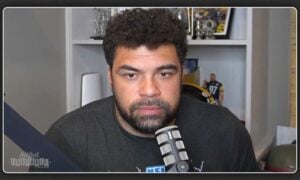By Matthew Marczi
Barring a few incidents here and there, the New England Patriots spent much of this past Sunday having their way with the Pittsburgh Steelers on the ground to the tune of 197 rushing yards on 35 attempts, for 5.6 yards per clip.
The workload was democratic, with starting tailback Stevan Ridley accounting for 115 yards, Brandon Bolden pitching in 36, and LeGarrette Blount rounding things off with another 47 of his own.
Because of the success on the ground, the Patriots were able to open up their play-action passing game, the success of which only further exploited their ability to run on the Steelers by masking from Pittsburgh what type of play would be run from any given formation. And make no mistake, New England’s offense was intelligently designed to be able to do just that to defenses.
The Patriots ran out of myriad formations, and against the myriad formations the Steelers threw at them, whether in base, nickel, or dime. There is no question that the Patriots indeed had quite a lot to do with the hurting that took place this past Sunday.
But that doesn’t mean anybody in Pittsburgh is off the hook. In fact, while the secondary was responsible for giving up over 400 yards through the air—likely closer to 500 if you add in the yardage gained through justified pass interference calls—they were also quite busy exacerbating the issues in the running game.
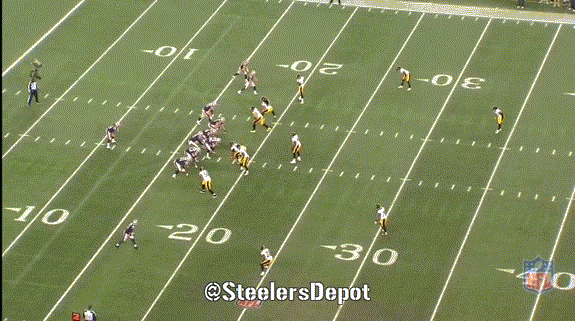
Take this mid-first quarter carry. Note that the Steelers were in their dime package here, with Steve McLendon and Vince Williams on the sideline and Jason Worilds playing inside. With Troy Polamalu screaming toward the B Gap, Bolden took the ball outside. The problem was that Danny Amendola, a receiver most certainly not known for his blocking proficiency, got the better of Cortez Allen.
In fact, not sufficiently paying attention, Allen actually got blown about three feet off the line by Amendola before getting caught inside, unable to get to the back, streaking for an 11-yard gain off the left edge, thanks in part to a missed tackle by Ike Taylor.
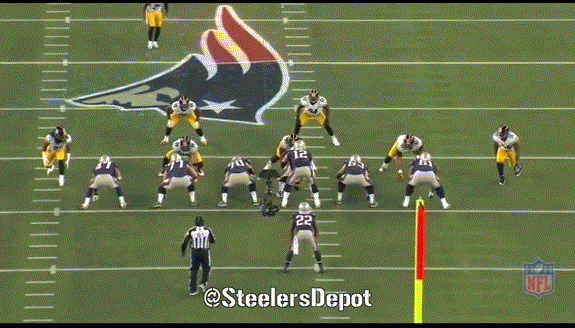
Later, in the second quarter, we find a perfect example of the failure of the secondary exacerbating what is already an issue. On this running play, Cameron Heyward was unable to properly evade a cut block and Lawrence Timmons badly over-pursued the play. This afforded Ridley a gaping hole right up the middle of the field.
There was Ryan Clark, however, ready to limit the damage—only he was juked out of his cleats and badly missed the open-field tackle. LaMarr Woodley had to play chase and tackle Ridley at midfield seven yards later on a gain of 13 yards.
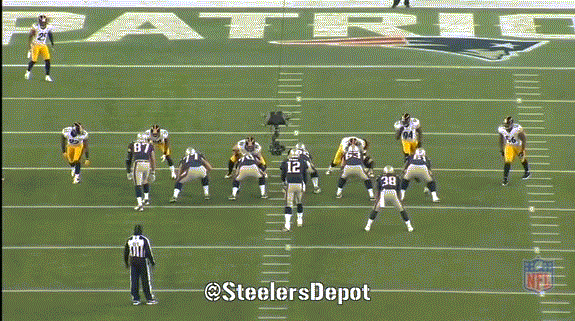
After Heyward got to Tom Brady for a sack, the Patriots were facing a third and goal situation from the 17-yard line. The Patriots then ran a draw play and nearly scored. This is because Allen failed to recognize the draw. After he observed Rob Gronkowski engaging Worilds in a run block, he should have had the presence of mind to look for a ball carrier.
Instead, he continued to stare down Gronkowski, and as a result, the pulling guard seemed to actually feel bad about throwing a block on the defensive back, who seemed completely oblivious to the fact that Brady was not, in fact, going to throw the ball at Gronkowski’s back.
With the Steelers running a stunt on the play that was to leave that particular area of the field vulnerable, Allen should have shown an even greater awareness in this situation. But it was left up to the safeties—and a trailing Woodley, again—to play goaltender and keep the Patriots out of the end zone.
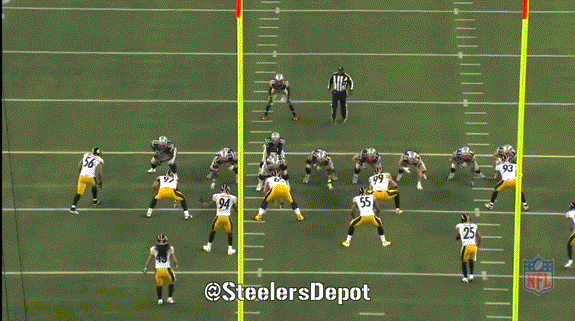
Late in the game, with the score quickly becoming out of reach, the secondary continued to struggle in run support. Here on a 2nd and 3 play in the red zone, William Gay was unable to contain Ridley on the edge, who stiff-armed the cornerback and squeezed through the crack for a six-yard gain and a first and goal situation.
While the run defense as a whole was dreadful, there is some value in looking a bit deeper to see what went awry. In this instance, a significant factor was the failures of the secondary holding the runners to a minimum gain by missing tackles and assignments. The blame certainly does not fall squarely on McLendon and Heyward.





